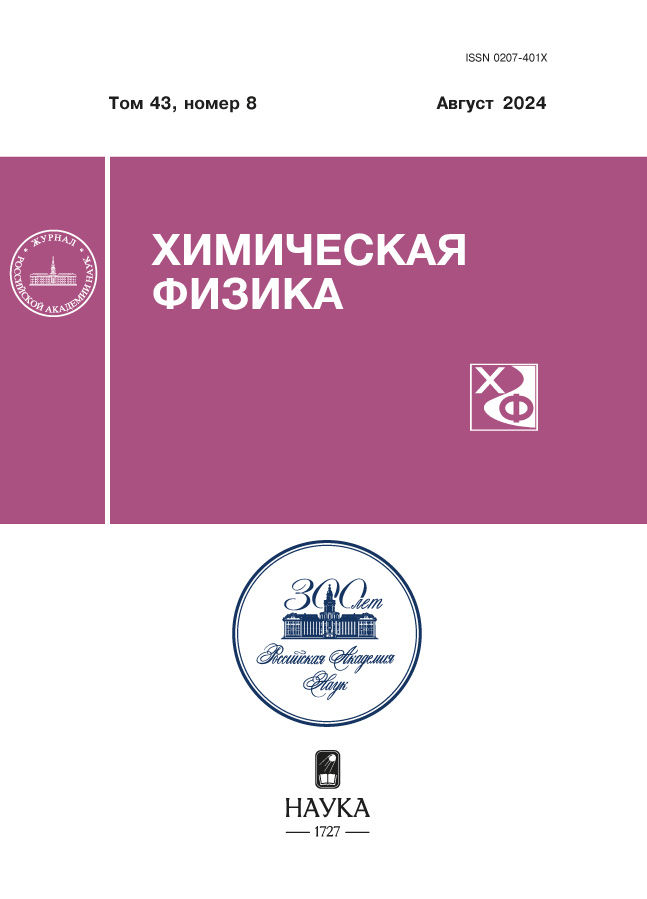Numerical simulation of oxidative conversion of methane to synthesis gas in a reversed flow reactor
- Авторлар: Kostenko S.S.1, Ivanova A.N.1, Karnaukh A.A.1, Polianczyk E.V.1
-
Мекемелер:
- Federal Research Center of Problems of Chemical Physics and Medicinal Chemistry, Russian Academy of Science
- Шығарылым: Том 43, № 8 (2024)
- Беттер: 49-61
- Бөлім: Combustion, explosion and shock waves
- URL: https://cijournal.ru/0207-401X/article/view/681884
- DOI: https://doi.org/10.31857/S0207401X24080065
- ID: 681884
Дәйексөз келтіру
Аннотация
A numerical model for the POX steam-oxygen conversion of methane to synthesis gas in a reversed flow non-premixed filtration combustion reactor with a reversed flow of steam-methane mixture and a continuous supply of oxygen to the reactor center is considered. The calculation was carried out for the oxygen/methane molar ratio 0.47 and steam/methane 0.5, i.e., in the parametric region close to the limit for the feasibility of the scheme. Various modes of initiation and control of flow reverse are considered, and dependences of the combustion temperature and the composition of products on the characteristics of the process are obtained. Comparison of the established cyclic mode of conversion with the predictions of the equilibrium model shows that kinetic constraints lead to a higher combustion temperature and incomplete conversion of methane. At high temperatures, the conversion proceeds via initial soot formation during the pyrolysis of methane and the subsequent reaction of soot with steam.
Толық мәтін
Авторлар туралы
S. Kostenko
Federal Research Center of Problems of Chemical Physics and Medicinal Chemistry, Russian Academy of Science
Хат алмасуға жауапты Автор.
Email: kostsv@icp.ac.ru
Ресей, Chernogolovka
A. Ivanova
Federal Research Center of Problems of Chemical Physics and Medicinal Chemistry, Russian Academy of Science
Email: kostsv@icp.ac.ru
Ресей, Chernogolovka
A. Karnaukh
Federal Research Center of Problems of Chemical Physics and Medicinal Chemistry, Russian Academy of Science
Email: kostsv@icp.ac.ru
Ресей, Chernogolovka
E. Polianczyk
Federal Research Center of Problems of Chemical Physics and Medicinal Chemistry, Russian Academy of Science
Email: kostsv@icp.ac.ru
Ресей, Chernogolovka
Әдебиет тізімі
- І.А. Makaryan, I.V. Sedov, A.V. Nikitin, V.S. Arutyunov, Nauchnyy zhurnal RGO 24(1), 50 (2020) (in Russian).
- Ѕ.М. Aldoshin, V.Ѕ. Arutyunov, V.І. Savchenko, І.V. Sedov, A.V. Nikitin, І. G. Fokin, Russ. Ј. Phys. Chem. В 15(3), 498–505 (2021). https://doi.org/10.31857
- А.N. Zagoruiko Current Topics in Catalysis. 10, 113 (2012).
- V. Arutyunov, Reviews in Chemical Engineering 37(1), 99 (2021). https://doi.org/10.1515/revce-2018-0057
- М.А. Mujeebu, Applied Energy. 173, 210 (2016). https://doi.org/10.1016/j.apenergy.2016.04.018
- Ѕ.І. Fut›ko, Ѕ.А. Zhdanok, Chemistry of filtration combustion of gases. Belaruskaya Navuka, Minsk (2004) (in Russian).
- R.Ј. Kee, F.М. Rupley, Е. Meeks, & Ј.А. Miller, CHEMKIN-III: А FORTRAN chemical kinetics package for the analysis of gas-phase chemical and plasma kinetics № SAND-96-8216 // 1996. Sandia National Lab(SNL-СА). Livermore. СА (United States).
- G.Р. Smith, D.М. Golden, М. Frenklach, N.W Moriarty, В. Eiteneer, М. Goldenberg, GRI3.0 mesh. Gas Research Institute, Chicago, IL. http://www.me.berke1ey.edu/gri mech.
- D. Goodwin, Н.К. Moffat, R.L. Speth, Cantera: an Object-Oriented Software Toolkit for Cheшical Kinetics, Thermodynamics, and Transport Processes, 2019. Version 2.5.0. www.cantera.org.
- А.А. Konnov, http://hornepages.vub.ac.be/akonnov.
- К.Ј. Hughes, Т. Turanyi, A.R. Clague, М.Ј. Pilling, Int. J. Chem. Kinet. 33, 513(2001). https://doi.org/10.1002/kin.1048
- F. Fotovat, М. Rahimpour, Inter. Ј. of Hydrogen Energy, 46(37), 19312(2021). https://doi.org/10.1016/j.ijhydene.2021.03.098
- A.A. Karnaukh, A.N. Ivanova, Khim. Fiz. 23(9), 13 (2004) (in Russian).
- S.S. Kostenko, E.V. Polianczyk, A.A. Karnaukh, A.N. Ivanova, G.B. Manelis, Khiin. Fiz. 25(5), 53 (2006) (in Russian).
- S.O. Dorofeenko, A.A. Zhirnov, E.V. Po1ianczyk, E.A. Salgansky, Patent № RU 2574464 (2016).
- S.O. Dorofeenko, E.V. Polianczyk, Chem. Eng. J. 292, 183 (2016). https://doi.org/10.1016/j.cej.2016.02.013
- E.V. Polianczyk, S.O. Dorofeenko, Inter. J. of Hydrogen Energy, 44(8), 4079 (2019). https://doi.org/10.1016/j.ijhydene.2018.12.117
- E.A. Salgansky, M.V. Tsvetkov, A.Yu. Zaichenko, D.N. Podlesniy, I.V. Sedov, Russ. J. Phys. Chem. B 15(6), 969–976 (2021).
- S.S. Kostenko, A.N. Ivanova, A.A. Kamaukh, E.V. Polianczyk, Chemical Engineering and Processing: Process Intensification, 122, 473 (2017). https://doi.org/10.1016/j.cep.2017.05.014
- S.O. Dorofeenko, E.V. Polianczyk, Russ. J. Phys. Chem. B 16(2), 242–252 (2022).
- M. Fierro, P. Requena, E. Salgansky, M. Toledo, Chem. Engineering J., 425, 1385 (2021). https://doi.org/10.1016/j.cej.2021.130178
- C.J. Sung, B. Li, and C.K. Law, Proc. 27-th Symposium (Intern.) on Combust. Pittsburgh: The Combust. Institute, 1523 (1998). https://www.princeton.edu/ cklaw/kinetics/s1w001/
- F. Westky, J.T. Herron, R.F. Hampson, W.G. Mallard, MD NIST Standard Reference Gaithersburg: Database 17. 1994.
Қосымша файлдар












